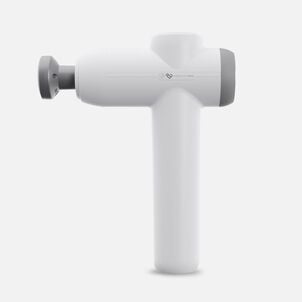You can contribute to an HSA as long as you have coverage under an HSA-qualified high-deductible health plan (HDHP) and don’t have another disqualifying health plan, such as most FSAs and other full-coverage health insurance plans.
If you have HSA-qualified health insurance, you probably already know you can deposit tax-free money into a health savings account (HSA) to save for future medical expenses or even for retirement. But did you know that "tax-free" can mean different things depending on how you make your HSA contributions?
While some people directly contribute to their HSA, others choose to make contributions via their employers. The employer then uses a salary reduction arrangement to take out pre-tax money from the employee's pay and send it to the HSA on the employee's behalf.
In both cases, there's no federal income tax on the HSA contributions (and in most states, there's no state income tax, either). However, some HSA contributions are still subject to payroll taxes. Let's take a look at how it works.

Income tax vs. payroll tax
First, let's get to a very common question: What's the difference between income tax and payroll tax?
- Income tax is paid entirely by the employee and is usually designated on your W-2 as "withholding" or simply "federal tax." In most states, there's an additional line for state withholding/tax.
- Payroll taxes, which fund Social Security, Medicare, and unemployment insurance, are paid partly by the employee and partly by the employer.
If you're self-employed, your self-employment tax refers to Social Security and Medicare taxes, and you essentially pay both the employer and employee portions in addition to income tax.
Contributions via salary reduction: Avoid both income tax and payroll tax
Suppose you’ve signed up for an HDHP and HSA through your employer. Your employer is likely using a Section 125 plan, which allows you to make salary reductions to cover your HSA contributions before your tax liability is calculated. What does this mean? You end up paying income taxes and payroll taxes in a smaller amount of income.
Some employers also make contributions on their employees' behalf since HSA contributions can come from the employer, employee, or both.
The total amount contributed, including the portion contributed by the employer, can't exceed the annual contribution limits set by the IRS. In 2024, that's $4,150 if you have HDHP coverage for just yourself and $8,300 if you have HDHP coverage for yourself and at least one other family member.
Employer contributions to an HSA are not considered income, so they're not subject to income tax or payroll tax. If the employee makes contributions via a Section 125 salary reduction arrangement, those contributions are also considered employer contributions, meaning they're not subject to income tax or payroll tax (see the instructions for IRS Form 8889; these contributions show up in Box 12, with Code W).
If your employer is deducting your HSA contributions from your paycheck but does not have a Section 125 plan allowing the contributions to be calculated before taxes, your HSA contributions would be considered income (this is rare, but it can happen).
You can then deduct that amount on your tax return to reduce your income tax, but you would not be able to avoid payroll taxes on the contributions.
Knowing the benefits of contributing to your Health Savings Account (HSA) through salary reduction, allows you to effectively sidestep both income tax and payroll tax obligations. Here are some things to consider:
- Section 125 Plan: If you've signed up for an HDHP and HSA through your employer, they are likely using a Section 125 plan. This allows you to make pre-tax salary reductions for HSA contributions which lowers your taxable income, reducing income and payroll taxes.
- Employer Contributions: Some employers contribute to your HSA. Remember, the total contributions (from both you and your employer) must not exceed IRS limits. In 2024, this limit is $4,150 for individual coverage and $8,300 for family coverage.
- Tax Benefits: Employer contributions are not taxed, nor are contributions you make through a Section 125 arrangement.
- Watch Out for Exceptions: In rare cases where your employer doesn't use a Section 125 plan, your contributions are considered income. However, you can deduct this amount on your tax return to reduce income tax, but payroll taxes still apply.
Contributions made outside your payroll system: Avoid income tax, but not payroll tax
But what if you buy your HDHP coverage on your own? Or you choose to use a bank or brokerage account other than the one your employer uses as an HSA custodian?
You can send money to your HSA yourself rather than using your employer's salary reduction plan. Note: This is your only option if your employer doesn't offer a means of contributing to an HSA via the payroll system.
You won't have to pay income tax on that money, but you'll still pay Medicare and Social Security taxes on it, and in most cases, unemployment insurance tax.
When you make your own HSA contributions, you contribute during the year with after-tax money, before to deducting them on your tax return (line 25 on Form 1040), regardless of whether you itemize deductions or take the standard deduction. But that only eliminates the income tax — there's no mechanism for recouping the payroll taxes you paid on that money.
Keep in mind that although avoiding payroll taxes sounds like a win, the current benefit may be partly or entirely offset by smaller Social Security checks once you retire since the amount you receive in Social Security benefits is based on the amount you earned that was subject to Social Security taxes during your working years.
As always, we're here to help you learn the basics, even though we can't offer tax or legal advice. Always speak with a tax adviser if you're curious about how this works for your situation.
—
Thank you for visiting the HSA Store Learning Center™. Don’t forget to follow us for more helpful tips on Facebook, Instagram, and X (formerly Twitter).


.png)
















